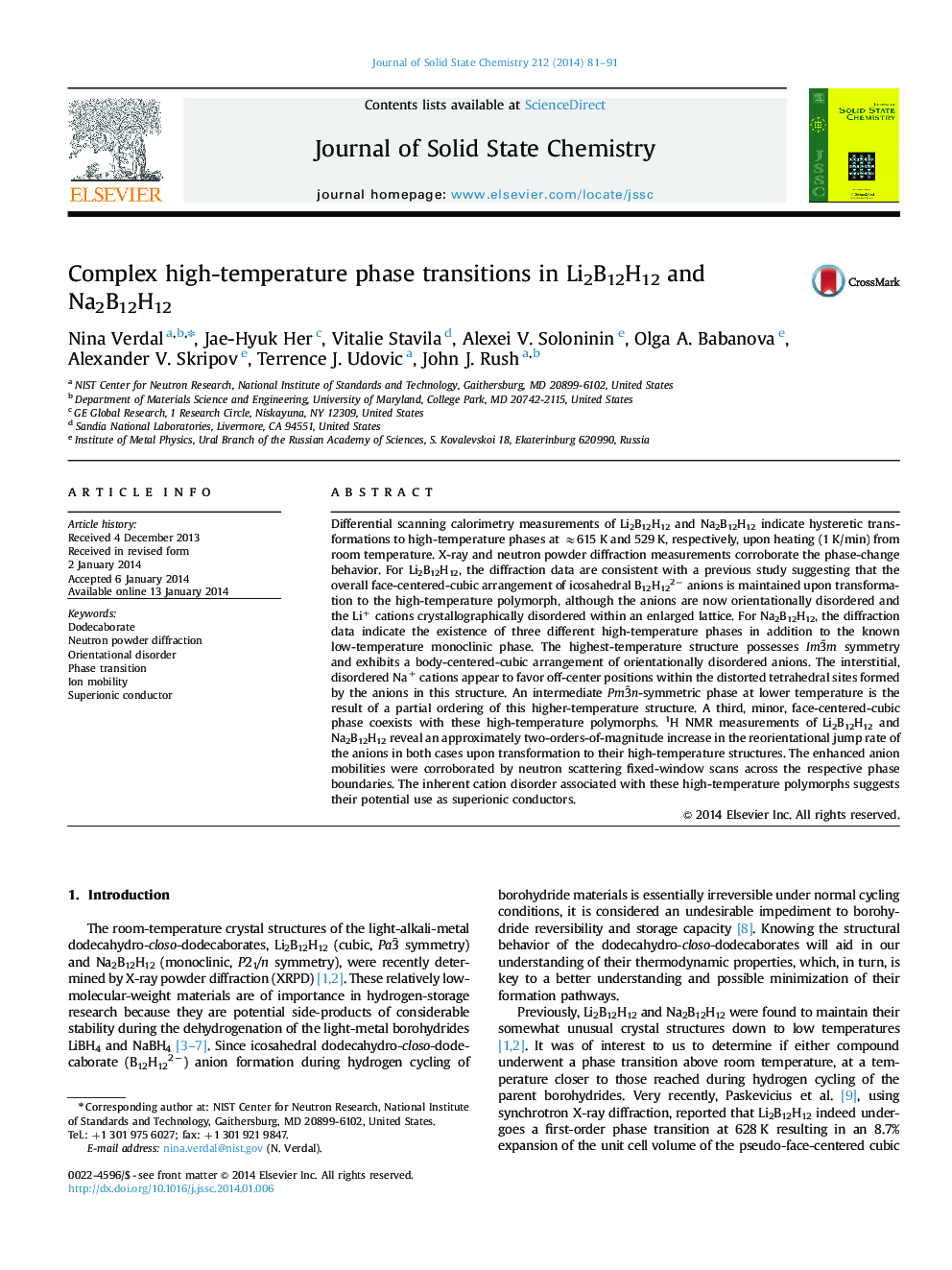| Article ID | Journal | Published Year | Pages | File Type |
|---|---|---|---|---|
| 1329861 | Journal of Solid State Chemistry | 2014 | 11 Pages |
•Li2B12H12 undergoes a high-temperature hysteretic phase transformation at ≈615 K.•Na2B12H12 undergoes a high-temperature hysteretic phase transformation at ≈529 K.•Increased anion mobility is observed with NMR upon these H-T phase transformations.•Three high temperature phases are observed for Na2B12H12, with increasing disorder.
Differential scanning calorimetry measurements of Li2B12H12 and Na2B12H12 indicate hysteretic transformations to high-temperature phases at ≈615 K and 529 K, respectively, upon heating (1 K/min) from room temperature. X-ray and neutron powder diffraction measurements corroborate the phase-change behavior. For Li2B12H12, the diffraction data are consistent with a previous study suggesting that the overall face-centered-cubic arrangement of icosahedral B12H122− anions is maintained upon transformation to the high-temperature polymorph, although the anions are now orientationally disordered and the Li+ cations crystallographically disordered within an enlarged lattice. For Na2B12H12, the diffraction data indicate the existence of three different high-temperature phases in addition to the known low-temperature monoclinic phase. The highest-temperature structure possesses Im3̄m symmetry and exhibits a body-centered-cubic arrangement of orientationally disordered anions. The interstitial, disordered Na+ cations appear to favor off-center positions within the distorted tetrahedral sites formed by the anions in this structure. An intermediate Pm3̄n-symmetric phase at lower temperature is the result of a partial ordering of this higher-temperature structure. A third, minor, face-centered-cubic phase coexists with these high-temperature polymorphs. 1H NMR measurements of Li2B12H12 and Na2B12H12 reveal an approximately two-orders-of-magnitude increase in the reorientational jump rate of the anions in both cases upon transformation to their high-temperature structures. The enhanced anion mobilities were corroborated by neutron scattering fixed-window scans across the respective phase boundaries. The inherent cation disorder associated with these high-temperature polymorphs suggests their potential use as superionic conductors.
Graphical abstractNa2B12H12 undergoes a phase transformation from an ordered monoclinic structure at low temperature to a partially disordered body-centered-cubic (bcc) structure at ≈529 K, and finally to a more-fully disordered bcc structure by ≈545 K.Figure optionsDownload full-size imageDownload as PowerPoint slide
